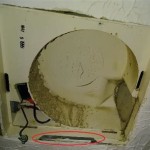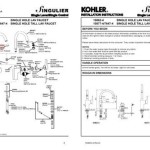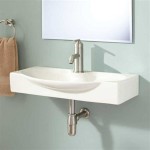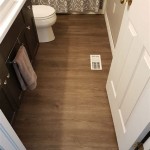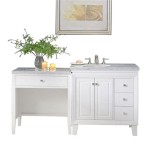Cost Of Adding A Bathroom To An Existing House
Adding a bathroom to an existing house is a substantial home improvement project that can significantly increase both the comfort and value of the property. However, it also represents a considerable financial investment. Understanding the various factors influencing the cost is crucial for homeowners contemplating this undertaking. Accurate budgeting and planning are essential to avoid unexpected expenses and ensure the project aligns with financial capabilities and desired outcomes.
The total cost of adding a bathroom can fluctuate dramatically, depending on a multitude of variables. These include the size and complexity of the bathroom, the quality of materials chosen, the location of the new bathroom within the house, and the prevailing labor costs in the region. Generally, homeowners can expect to spend anywhere from $5,000 to $50,000 or even more for a high-end, custom bathroom addition. This broad range underscores the importance of detailed planning and obtaining multiple quotes from qualified contractors.
Before embarking on the project, it is vital to assess the feasibility of adding a bathroom in the desired location. This involves considering existing plumbing lines, electrical wiring, and structural elements. If significant modifications to these systems are required, the cost can escalate substantially. Furthermore, local building codes and permitting requirements must be factored into the planning process, as compliance is mandatory and deviations can lead to costly fines and delays.
Key Factors Influencing the Cost of a Bathroom Addition
Several key factors significantly impact the overall cost of adding a bathroom to an existing house. These factors should be carefully considered during the initial planning stages to create a realistic budget and avoid unexpected expenses.
Location and Plumbing: The location of the new bathroom relative to existing plumbing lines is a primary cost driver. Adding a bathroom directly above or adjacent to an existing bathroom or kitchen is generally less expensive, as it allows for easier access to water supply and drain lines. If the new bathroom is located further away, extending these lines can involve significant labor and material costs, potentially requiring the opening up of walls and floors.
The complexity of the plumbing system itself also influences the cost. Installing a toilet, sink, and shower or bathtub each require separate water supply and drain connections. The type of piping used (e.g., copper, PEX) and the complexity of the drain configuration can all affect the overall plumbing expenses. Additionally, consider the type of toilet and shower/tub fixtures you plan to install. High-efficiency toilets and custom shower systems often come with significant price premiums.
Size and Layout: The size and layout of the bathroom directly correlate with the amount of materials and labor required. A larger bathroom will necessitate more tile, flooring, drywall, and fixtures. A complex layout with multiple angles or custom features, such as a built-in shower bench or a custom vanity, will also increase the cost due to the increased labor and material waste.
Consider the accessibility of the space. Difficult access can slow down the construction process and increase labor costs. Tight spaces may require specialized tools and techniques, adding to the overall expense. The chosen fixtures impact size. A large soaking tub will require more floor space than a standard shower stall. Thoughtful planning of the layout can maximize space efficiency and minimize costs.
Materials and Finishes: The selection of materials and finishes offers a wide range of price points. From basic ceramic tiles to high-end natural stone, the cost of flooring can vary significantly. Similarly, the price of vanities, countertops, faucets, and shower fixtures can range from budget-friendly options to luxury brands. Choosing high-quality materials can increase the upfront cost but may offer long-term benefits in terms of durability and aesthetics.
Consider the trade-offs between price and quality when selecting materials. While it may be tempting to opt for the cheapest options, investing in durable and water-resistant materials is crucial for a bathroom due to the constant exposure to moisture. Inadequate materials can lead to future problems like mold growth, water damage, and the need for premature repairs.
Hidden Costs and Budgeting Considerations
Beyond the readily apparent costs of materials and labor, several hidden costs can significantly impact the overall budget of a bathroom addition. Failing to account for these potential expenses can lead to financial strain and project delays.
Permits and Inspections: Obtaining the necessary permits from local authorities is a crucial step in any home improvement project. Permit fees vary depending on the location and the scope of the work, but they are a necessary expense. Inspections are also required at various stages of the construction process to ensure compliance with building codes. Failure to obtain permits or pass inspections can result in fines and delays, potentially adding significant costs to the project.
Research the permit requirements in your area before starting the project. Contact your local building department to determine the specific permits needed and the associated fees. Factor in the time required to obtain permits, as this can sometimes be a lengthy process.
Unexpected Repairs: During the demolition and construction phases, unforeseen problems may arise, such as hidden water damage, faulty wiring, or structural issues. These unexpected repairs can add to the overall cost of the project. It is wise to set aside a contingency fund to cover such unforeseen expenses.
A contingency fund of 10-15% of the total project cost is generally recommended. This provides a buffer to cover unexpected repairs without derailing the budget. Communicate openly with your contractor about potential issues and the process for addressing them if they arise.
Labor Costs: Labor costs constitute a significant portion of the overall project expense. Hiring qualified and experienced contractors is essential to ensure the work is done correctly and to code. Obtain multiple quotes from different contractors and compare their bids carefully. Be wary of bids that are significantly lower than others, as this may indicate substandard workmanship or the use of inferior materials.
Check the contractor's credentials, licenses, and insurance coverage before hiring them. Ask for references and review their past work. A reputable contractor will be able to provide a detailed estimate and answer any questions you may have about the project scope and timeline.
Strategies for Reducing Costs
While adding a bathroom can be a significant investment, several strategies can help homeowners reduce costs without compromising quality or functionality.
Minimize Structural Changes: The more structural changes required, the higher the cost of the project. Choosing a location that minimizes the need for extensive modifications to walls, floors, or plumbing systems can significantly reduce expenses. Consider utilizing existing features, such as a closet or unused space, rather than building a new addition.
Repurposing existing spaces can save on both labor and material costs. Working within the existing infrastructure simplifies the plumbing and electrical work, reducing the overall complexity and expense of the project.
Opt for Standard Fixtures and Materials: Custom fixtures and high-end materials can significantly increase the cost of a bathroom addition. Choosing standard fixtures and readily available materials can help keep the budget in check. Opt for classic, timeless designs that will remain stylish for years to come.
Standard doesn't necessarily mean cheap. many manufacturers offer high-quality, stylish fixtures and materials at reasonable prices. Research different brands and compare prices to find the best value for your money. Consider purchasing materials during sales or clearance events to save even more.
DIY Certain Tasks (If Skilled): If you have experience in plumbing, electrical work, or tiling, you may be able to tackle some of the simpler tasks yourself, saving on labor costs. However, it is crucial to be realistic about your skills and limitations. Improperly installed plumbing or electrical wiring can be dangerous and costly to fix.
If you are considering DIY tasks, be sure to obtain the necessary permits and follow all building codes. Consult with a professional if you are unsure about any aspect of the project. It is often better to hire a professional for complex or potentially hazardous tasks.
Adding a bathroom to an existing house is a major undertaking that requires careful planning and budgeting. By understanding the factors influencing the cost, anticipating potential hidden expenses, and exploring strategies for reducing costs, homeowners can ensure that the project is completed successfully and within their financial means. Thorough research, accurate estimates, and clear communication with contractors are essential for a positive and cost-effective bathroom addition experience.

Can You Add A Bathroom Anywhere In House The Victoriaplum Com

How Much Does It Cost To Add A Bathroom

How Much Does It Cost To Add A Bathroom 2024 Data

How Much Does Adding An En Suite Cost Bathroom Guru

Bathroom Extension Cost Guide S

Cost To Add A Bathroom 2024 Guide Forbes Home

Can You Add A Bathroom Anywhere In House The Victoriaplum Com
:strip_icc()/housesprucingbathroom3-7b0fca1959964b7cbcc866ada820aba3.jpeg?strip=all)
This Is How Much It Costs To Add A Bathroom

How Much Does An Extra Bathroom Add To The Value Of A House Resi

How To Add A Bathroom Costs And Process
Related Posts
